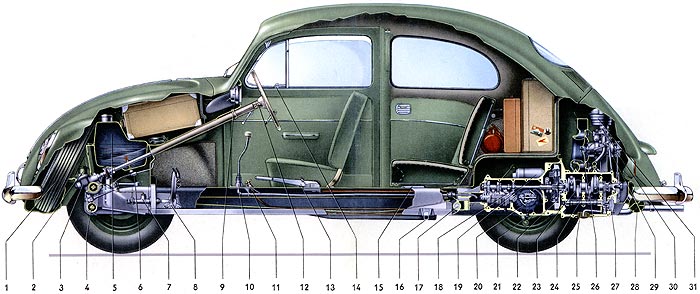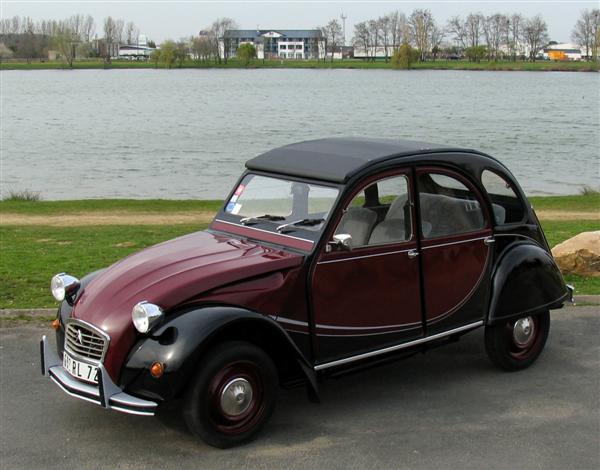
The biggest example of a nationwide effort for affordable mobility is the VW Beetle, the so-called “peoples car”. Personally I think the car was far too technical for its time, If not for the enormous amounts of free labor invested in the development, the Beetle would have been more expensive that it was.
Compared to the 2CV, the VW beetle is a Lexus. It was design for the German autobahn, while the 2CV was designed for unpaved country roads. Its solid build is light years ahead of the rickety 2CV and its price despite being very cheap, was still double that of the 2CV. Regardless the car had as much technical innovation as the 2CV, because it was spearheaded by the Best Engineer in his era Ferdinand Porsche. Porsche used rear mounted air cooled engine constructed out of lightweight magnesium, specially treated anticorrosion steel chassis, the first use of a torsion bar suspension, acrylic paint and a very aerodynamic shape for its day.
The car was thoroughly tested and engineered to standards that rival today’s cars. For a Nigerian car, going in the direction of the beetle would lead to bankruptcy and total failure, because the government is not ready to pour in such an investment. But key concepts from its design can be taken into consideration, like the rear mounted air-cooled engine, and aerodynamic shape. The beetle shows what can be done when a whole nation puts its back behind a technical endeavor. The end result was a car that was more advanced than anything in production at the time and yet affordable by the masses
Compared to the 2CV, the VW beetle is a Lexus. It was design for the German autobahn, while the 2CV was designed for unpaved country roads. Its solid build is light years ahead of the rickety 2CV and its price despite being very cheap, was still double that of the 2CV. Regardless the car had as much technical innovation as the 2CV, because it was spearheaded by the Best Engineer in his era Ferdinand Porsche. Porsche used rear mounted air cooled engine constructed out of lightweight magnesium, specially treated anticorrosion steel chassis, the first use of a torsion bar suspension, acrylic paint and a very aerodynamic shape for its day.
The car was thoroughly tested and engineered to standards that rival today’s cars. For a Nigerian car, going in the direction of the beetle would lead to bankruptcy and total failure, because the government is not ready to pour in such an investment. But key concepts from its design can be taken into consideration, like the rear mounted air-cooled engine, and aerodynamic shape. The beetle shows what can be done when a whole nation puts its back behind a technical endeavor. The end result was a car that was more advanced than anything in production at the time and yet affordable by the masses


